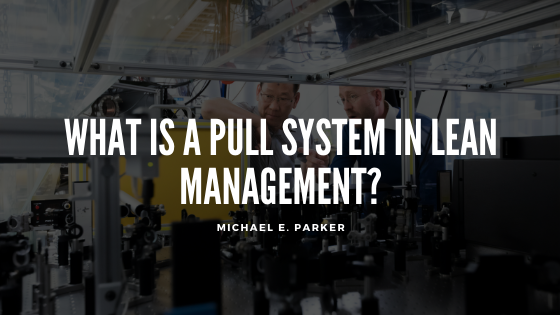What Is a Pull System in Lean Management?

Organizational development professionals are often called upon to perform audits of various processes. These experts are looking for ways to improve efficiencies among common production areas. Lean production and management systems offer a variety of methods for improving manufacturing and production processes. One such method is called a pull system. A pull system is commonly used to eliminate waste and improve operations from the production line to the top-tier management styles.
Eliminates Waste
A pull system places heavy emphasis on waste elimination. Conserving resources is a significant focus in a pull system. With this method, each station is established to run at full capacity without producing unnecessary overage. Production begins according to customer or sales demand, and human resources are skilled and cross-trained to operate equipment efficiently.
Signals Readiness
A visual workflow is the easiest way to control the pull system environment. Colorful cards, vision boards, and other stimuli are often used to signal needs. Virtual or visual signals ensure that the next station understands that an order or new project is coming their way. These tangible cues also help the previous department or station rate their progress.
Adapts to Changes
Although a push system also makes concessions for unexpected changes, a pull system effectively plans for change. At first glance, a pull system is considered reactive because it appears to wait for signals before beginning a production line. In reality, however, a pull system is very responsive to change. Because each area of specialization is operating at peak efficiency, users and equipment along the supply chain can quickly adapt to an unexpected request or challenge.
Scales Resources
The very concept of lean management was derived to optimize resources. Whether those resources come in the form of machinery or a team of individuals playing different roles, resources must be effectively managed. Whether by a person or a machine, the amount of work completed each day is calculated and reviewed. These measurements are used to determine where changes are needed within the system.
Essentially, whatever can be measured can be managed. The pull system component of lean management helps business owners recognize and improve areas of low efficiency.
Articles from Michael E Parker
View blog
One of the benefits of being an entrepreneur is not having a boss breathing down your neck or dictat ...

Starting a business is a dream of many, but few take the necessary steps to make their dream a reali ...

As a leader, it can be tempting to prioritize work over everything else in your life. However, by do ...
You may be interested in these jobs
-

Store Associate Phoenix
Found in: Lensa US P 2 C2 - 5 days ago
99 Cents Only Phoenix, United States99 Cents Only - JobID: [Retail Associate / Team Member] As a Store Associate at 99 Cents Only Stores, you'll: Unload and sort merchandise upon delivery arrival; Stock and display merchandise in accordance with Company merchandising standards; Follow all Company merchandising guid ...
-

Pharmacy Technician
Found in: Lensa US P 2 C2 - 5 days ago
Parkland Memorial Hospital Dallas, United StatesProvides direct support to pharmacists and pharmacy staff in preparing orders, packaging and labeling, tracking inventory, maintaining records, cashiering/payment collections and performing clerical duties. MINIMUM SPECIFICATIONS Education - Must hav Pharmacy Technician, Technici ...
-

Senior Software Engineer
Found in: Lensa US P 2 C2 - 1 week ago
Englewood CO Englewood, United StatesReady to Empower Clients & Change People's Lives? · Yes? Then we want to talk to you · iLending is experiencing hyper-growth and looking for Team Members ready to make a difference in the lives of our clients. · We offer a fast paced, fun and exciting environment, we work hard an ...
Comments